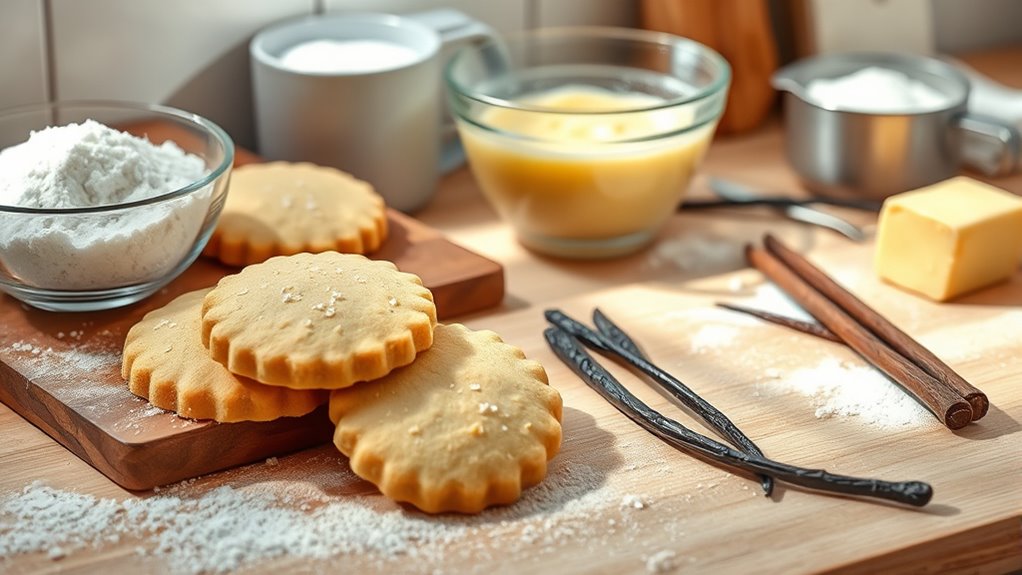To make perfect shortbread cookies, start by creaming one cup room-temp unsalted butter with half a cup granulated sugar. Sift two cups all-purpose flour and a pinch of salt, then gradually mix into the butter blend. Chill the dough for 30 minutes to hold its shape. Roll out, cut, and bake on parchment-lined sheets at 325°F until pale golden. Serve with a dusting of powdered sugar or chocolate drizzle. Keep exploring for tips on flavor variations and serving.
Ingredients and Quantity
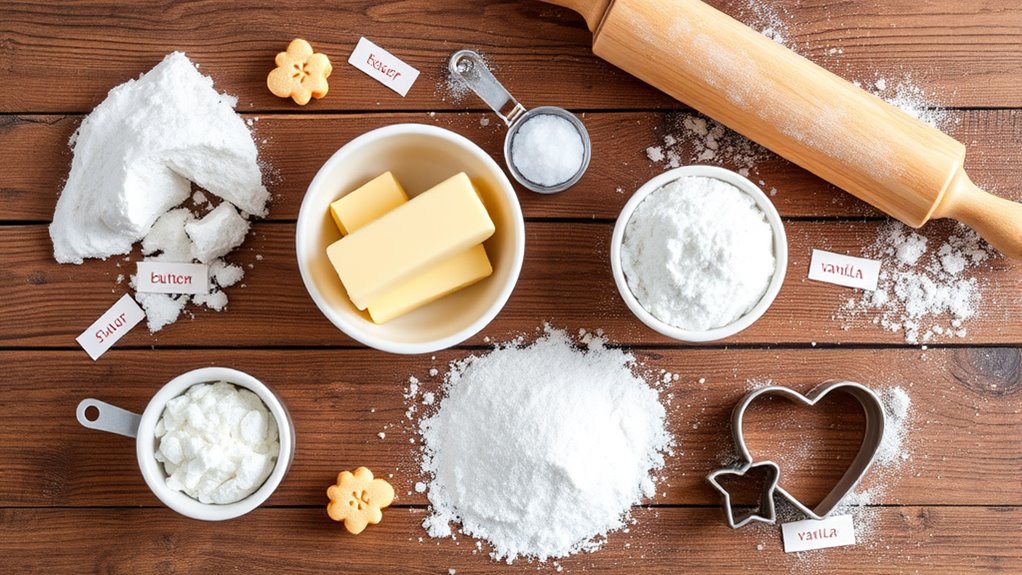
Before you begin mixing, make sure you have exactly 1 cup (226 grams) of unsalted butter at room temperature, 1/2 cup (100 grams) of granulated sugar, 2 cups (240 grams) of all-purpose flour, and a pinch of salt. These core ingredients form the foundation for classic shortbread, but exploring shortbread variations lets you substitute ingredients freely. For example, powdered sugar can replace granulated sugar for a finer texture, or almond flour can partially substitute all-purpose flour for a nuttier flavor.
| Ingredient | Quantity |
|---|---|
| Unsalted Butter | 1 cup (226 grams) |
| Granulated Sugar | 1/2 cup (100 grams) |
| All-Purpose Flour | 2 cups (240 grams) |
Mastering precise quantities empowers you to innovate with ingredient substitutions confidently.
Preparations
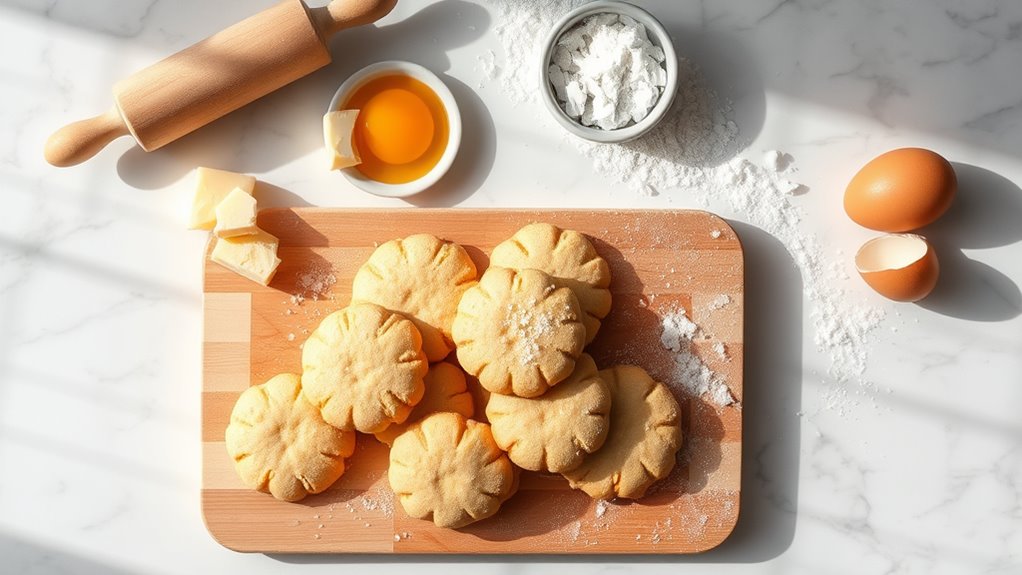
With your ingredients measured and ready, focus on preparing your workspace and equipment to guarantee consistent results. Ascertain all tools—mixing bowls, spatulas, measuring cups—are clean and within reach. Preheat your oven to the precise temperature noted in your recipe to maintain proper baking techniques. Line your baking sheet with parchment paper or a silicone mat for even heat distribution and easy cleanup. Consider your flavor variations now: have spices, extracts, or zest prepared if you plan to customize your shortbread. Chilling your dough before baking can improve texture and prevent spreading, so allocate time accordingly. Maintaining an organized station and methodical approach empowers you to control every variable, guaranteeing your cookies turn out perfectly crisp, buttery, and flavorful.
How to Prepare
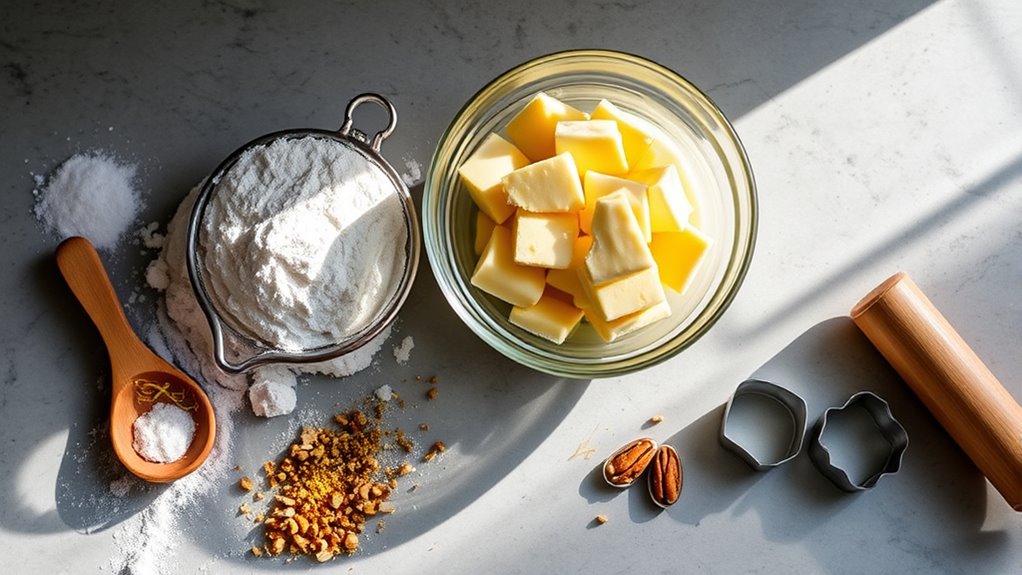
- Begin by creaming softened butter with granulated sugar using a stand mixer fitted with the paddle attachment or a hand mixer on medium speed. This step guarantees a smooth, aerated base essential for tender shortbread.
- Sift all-purpose flour and salt to prevent lumps and guarantee even texture.
- Gradually incorporate the sifted dry ingredients into the creamed butter, maintaining low speed to avoid overmixing.
- Blend until just combined, ensuring not to overwork the dough.
- Customize the dough by gently folding in variations such as citrus zest or ground nuts to preserve the dough structure.
- Master precise control over mixing and ingredient integration to achieve the ideal crumb texture and flavor balance for perfect shortbread.
How to Serve
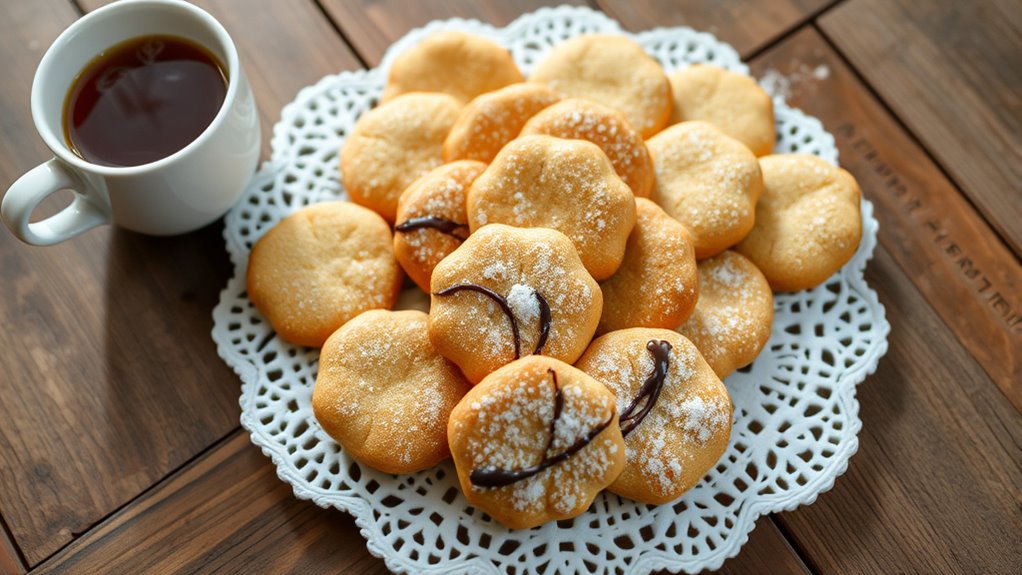
Although shortbread cookies are often enjoyed on their own, presenting them thoughtfully can elevate the tasting experience. For ideal cookie presentation, arrange the cookies in neat rows or overlapping layers on a flat platter to highlight their uniform shape and texture. Use parchment paper or a decorative doily underneath to add contrast and prevent sliding. Serving suggestions include pairing shortbread with a light dusting of powdered sugar or a drizzle of melted dark chocolate for visual appeal and flavor enhancement. You can also offer complementary accompaniments such as herbal tea or a mild coffee to balance the buttery richness. Remember to serve at room temperature to preserve the delicate crumb structure. This precise approach to serving reinforces the freedom to customize your presentation while respecting the cookie’s traditional qualities.
Tips
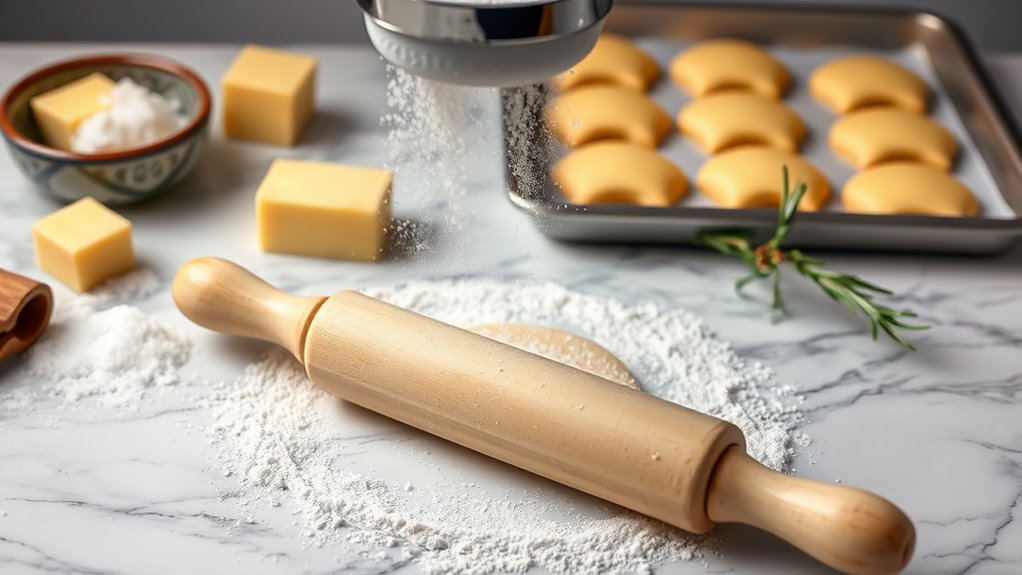
When aiming for perfect shortbread cookies, controlling the dough’s temperature is essential to maintain its crumbly texture and prevent spreading. To optimize your baking techniques, keep these tips in mind:
- Chill your dough for at least 30 minutes before baking; this solidifies fats, preserving shape and texture during baking.
- Use fine granulated sugar or powdered sugar to blend smoothly, enhancing the cookie’s delicate crumb.
- Experiment with cookie variations by incorporating ingredients like citrus zest, vanilla bean, or finely chopped nuts to elevate flavor profiles without compromising structure.
Food Value and Benefit
Shortbread cookies are primarily made from butter, sugar, and flour, resulting in a nutritional profile rich in fats and carbohydrates. This combination provides a concentrated source of energy but contains limited vitamins and minerals.
Shortbread cookies combine butter, sugar, and flour for a rich source of energy with few vitamins.
Food Value of Shortbread Cookies:
- High in fats, especially saturated fats from butter
- Rich in carbohydrates from sugar and flour
- Contains small amounts of fat-soluble vitamins such as Vitamin A and Vitamin E
- Provides minor quantities of minerals like calcium and iron from flour
Benefits of Eating Shortbread Cookies:
- Provides quick and concentrated energy due to high carbohydrate and fat content
- Supplies fat-soluble vitamins A and E, which support vision, skin health, and antioxidant functions
- Can be enjoyed as a satisfying treat that supports mental well-being when consumed in moderation
- Offers a source of comfort and indulgence within a balanced diet
While shortbread cookies are not a significant source of fiber or micronutrients, enjoying them occasionally can complement your diet without compromising nutritional balance.
